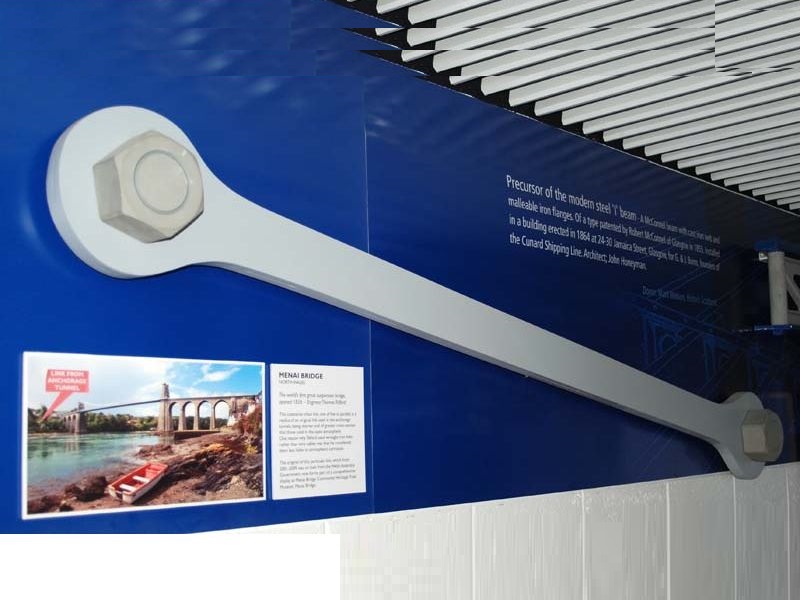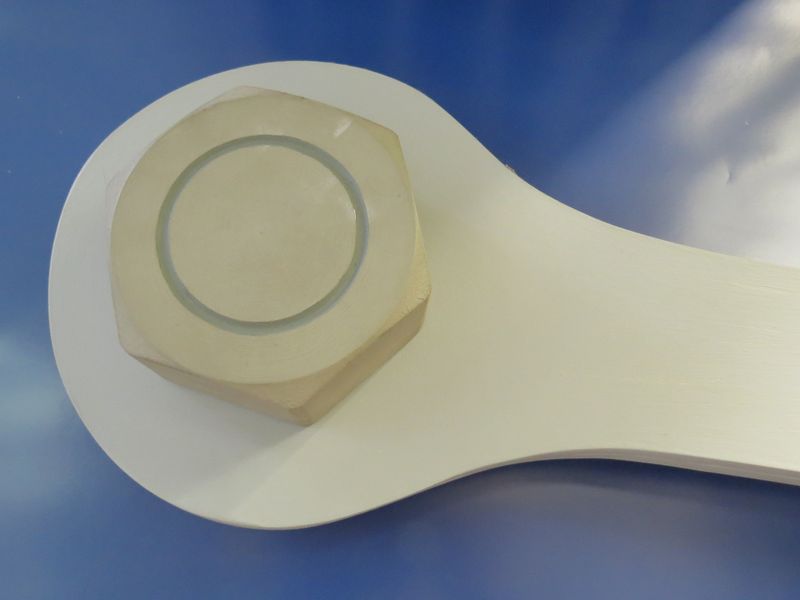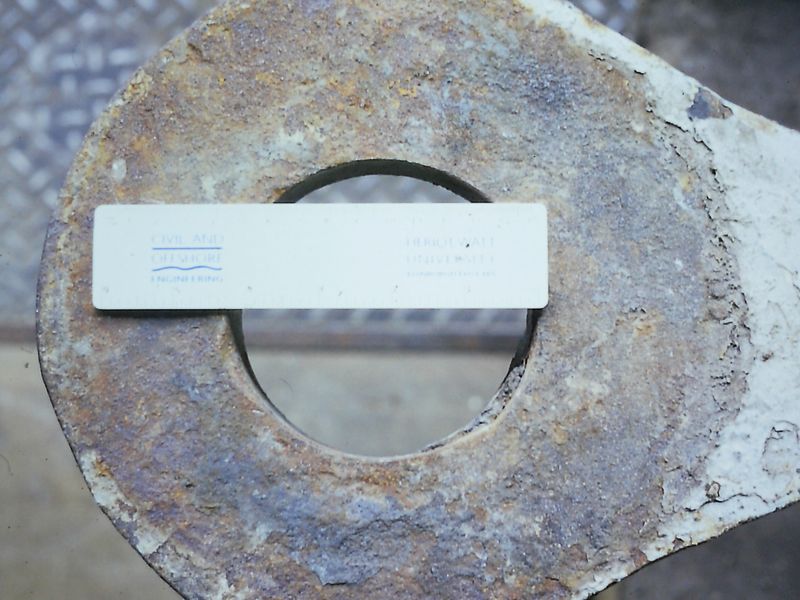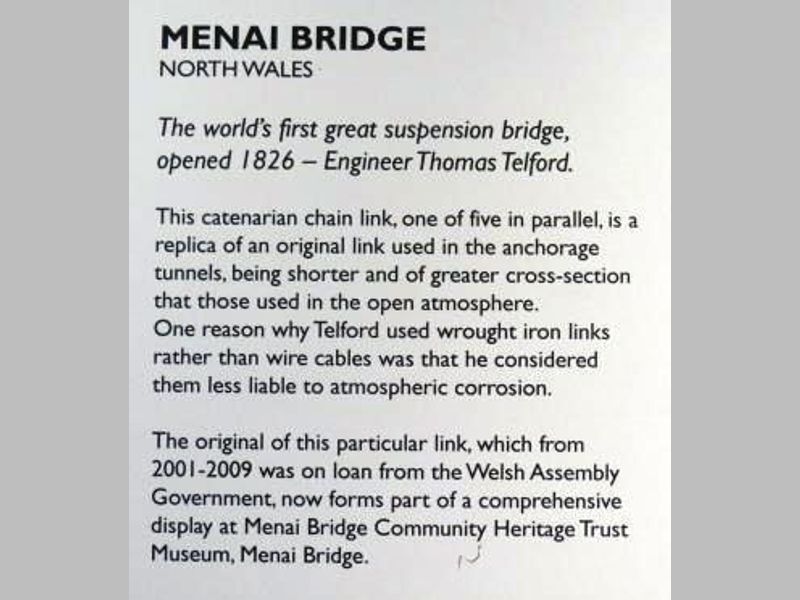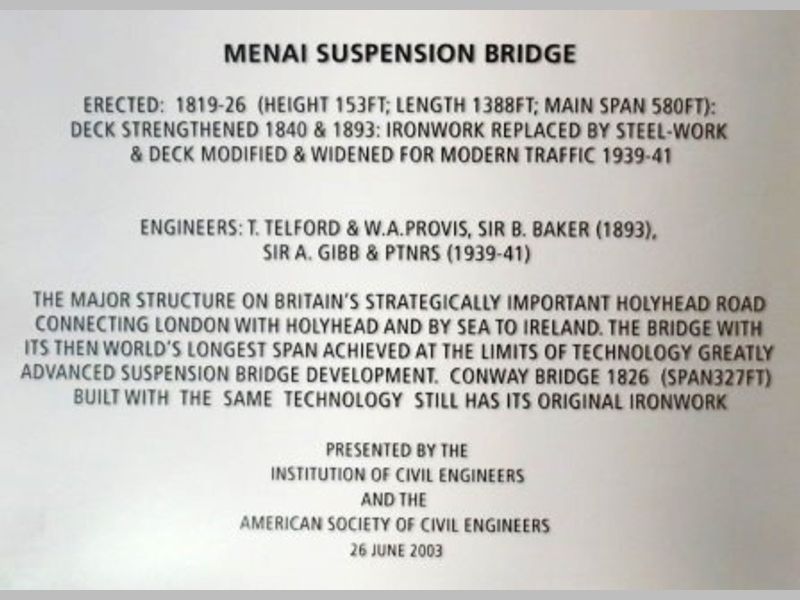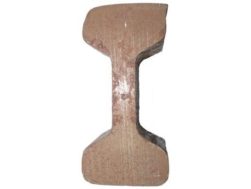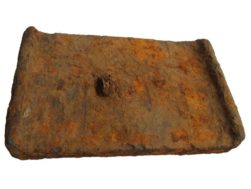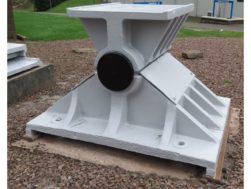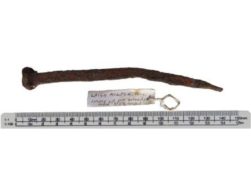Description
Exact replica in wood of an original wrought iron link made c.1823 from the anchorage tunnel of the Menai Bridge on the London to Holyhead Road the world’s longest span suspension bridge when opened in 1826. The reconditioned bridge is still in use without weight limit and is an international landmark in the evolution of this bridge type. The item was originally in the museum on loan from the Welsh Assembly Government. However, the link was returned to Wales on 7 July 2009 and it was replaced by the present wooden replica about one month earlier. The replica was made by the Heriot-Watt Civil & Off-shore Engineering laboratory technicians.
Every link in the bridge was strained to twice its design load under which it was subjected to a sharp blow with a large hammer. The link was then stamped by the materials testing engineer John Provis with a proofmark which is not visible in this case because of the layers of paint. The link was originally immersed in a bath of hot linseed oil dried and then painted with white lead paint which Telford thought would best reflect the sun’s rays and minimise temperature in the chains. Telford originally envisaged parallel element cables developed from experiments with wire in 1814 but abandoned the idea in favour of chains which were then more economical and practical in terms of erection and resistance to atmospheric corrosion.
In 2001 paint samples were taken from the link. The purpose was to determine if the paint nearest the iron surface was ivory white which Telford is understood to have thought most appropriate for mitigating expansion temperature effects.

